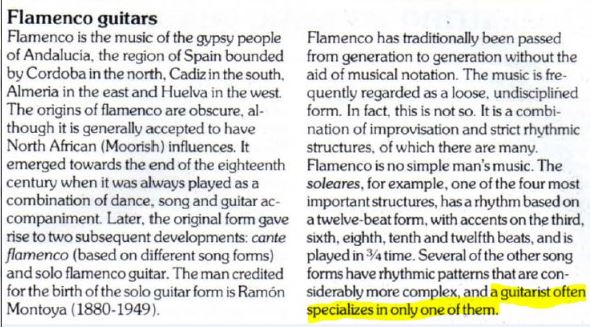|
Ricardo -> RE: Falseta vs Llamada (Oct. 14 2020 22:55:07)
|
quote:
ORIGINAL: devilhand
quote:
Piwin post was great nothing to add except yes temple and ayeo are interchangeable terms, the other most often used is “salida”.
First I thought tiriti tran tran was temple or salida in Alegria. But I just came to know that it's called Lalias according to Bernard Leblon. Does anyone know Lalias in other palos?
Not sure what you are talking about, but tiri tran tran is the cantiñas melody that corresponds to the melody that has lyrics “con La luz del Cigarro, yo vi molino...” etc. This cantinas melody is often (but not always) attached to the ending of one of the Alegrias melodies. It is therefore often called a “colatilla” or little tail, meaning it is a short ending that may or may not be used in combo with Alegrias or on it’s own. The story I heard was that some cantaor was singing Alegrias and forgot the lyrics to the colatilla and sang tiri tiri tran tran instead. After the joke wore off some cantaors decided to do it deliberately as a warm up or “temple” as you said. “Salida” would be a term used to describe someone singing that OR ANYTHING ELSE, at the beginning of the dance when the dancer comes out, before she starts stomping. It is often this colatilla but it can be one with actual lyrics or a free style song, lots of options are used as a “salida”.
When the dancer wants a colatilla sung after the silencio section of the dance, it is often called “Castellana”, presumably because the original cantinas sung here used that word in the lyrics, but I have never heard it. It would be dumb to sing tiri tiri tran tran here literally but it’s often the same melody used here.
There are other cantinas melodies that function as “colatillas” also.
|
|
|
|

